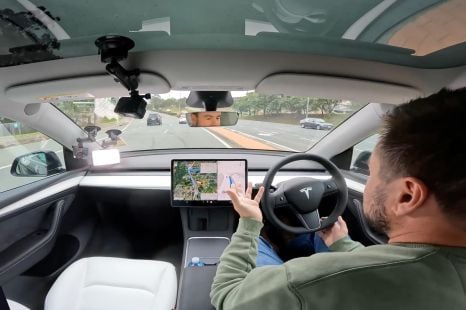

William Stopford
Tesla switches on FSD Supervised in Australia, announces subscription pricing
11 Minutes Ago
We had the chance to join Ford last year on a development drive with the new Ranger, Everest and Ranger Raptor to see just how hard these cars are tested before launch.
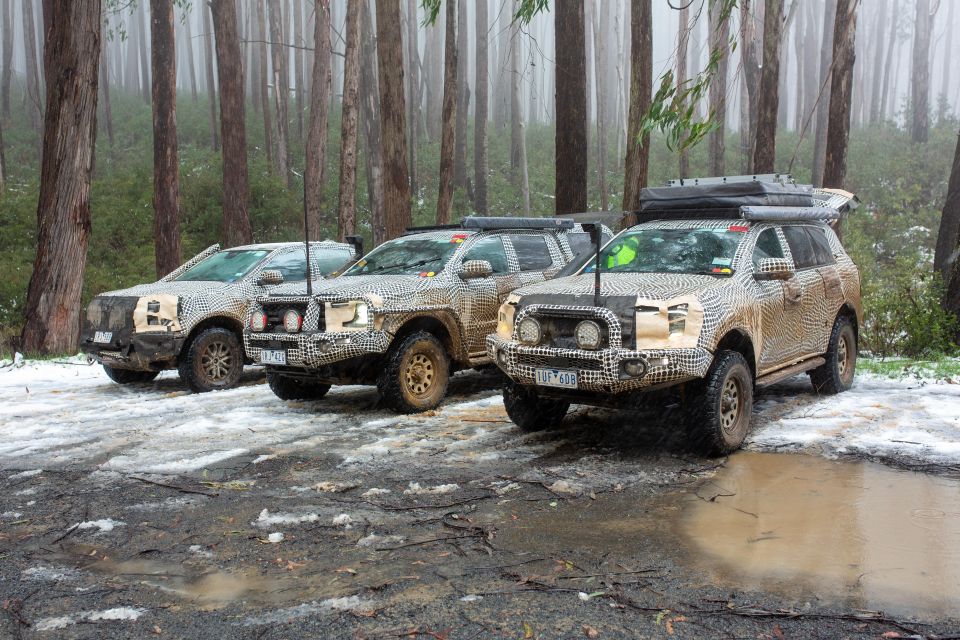


Where expert car reviews meet expert car buying – CarExpert gives you trusted advice, personalised service and real savings on your next new car.
It’s the middle of November and I’ve been told to pack warm clothes – we were expecting snow, just two weeks out from the start of summer.
We were heading into the Victorian High Country to join a group of Ford engineers returning from a 10-day evaluation trip with the all-new Ford Everest, Ranger and Ranger Raptor – along with a number of current-generation support vehicles full of spare parts.
The trip started in Dargo, went to the Blue Rag, down through the Crooked River trip, Billy Goats (in the rain) over Collingwood spur, then towards Bright and Porepunkah. Following that, a road leg along Mansfield Whitfield Rd and then to Mansfield, plus another couple of days prior to closing out.
The team wanted one last pass of Mount Stirling and its four-wheel drive tracks just near the peak of Mount Buller before heading back to Ford’s proving ground in Lara, Victoria, to evaluate data.
This trip was designed to torture test the vehicles, along with the litany of ARB accessories, which Ford had developed in partnership with the Aussie brand, to ensure that when a customer gets their hands on these vehicles, everything works as it should.
Now, when I say torture test, I mean they are deliberately inflicting the worst case customer scenarios on these cars. They are attempting terrain you’d generally only attempt with a modified four-wheel drive and pushing these vehicles to their limits.
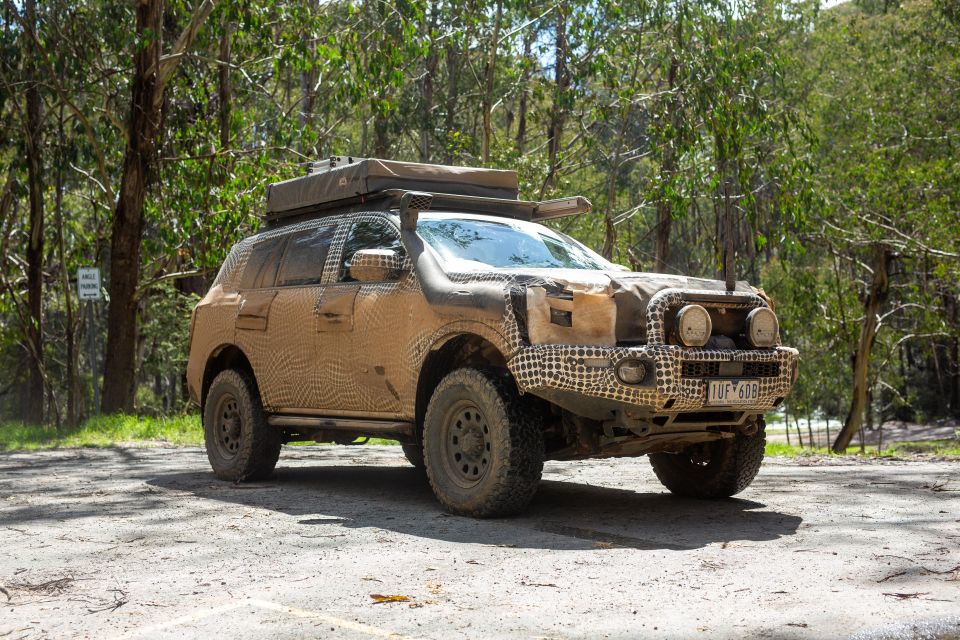
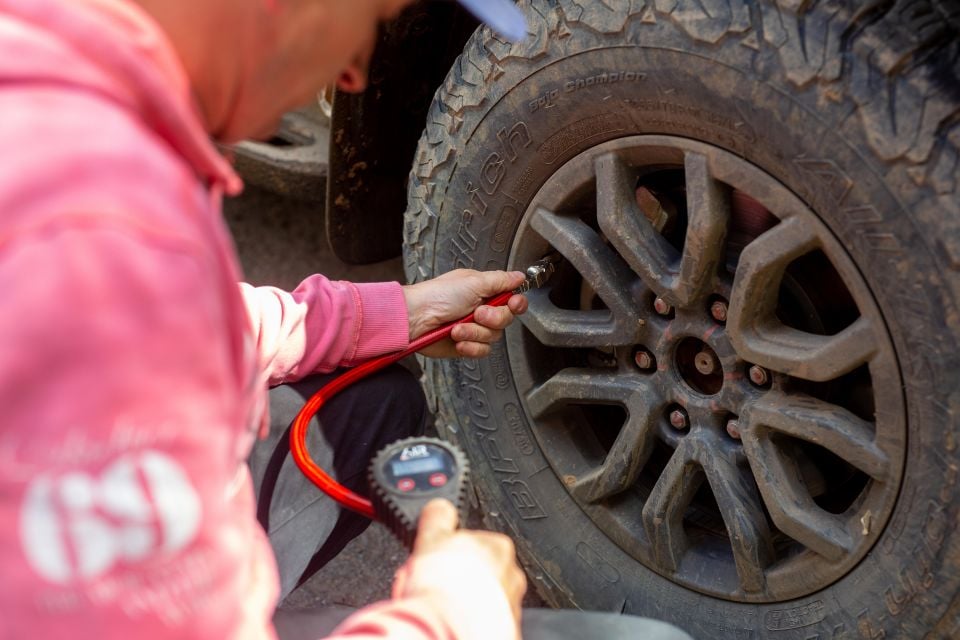
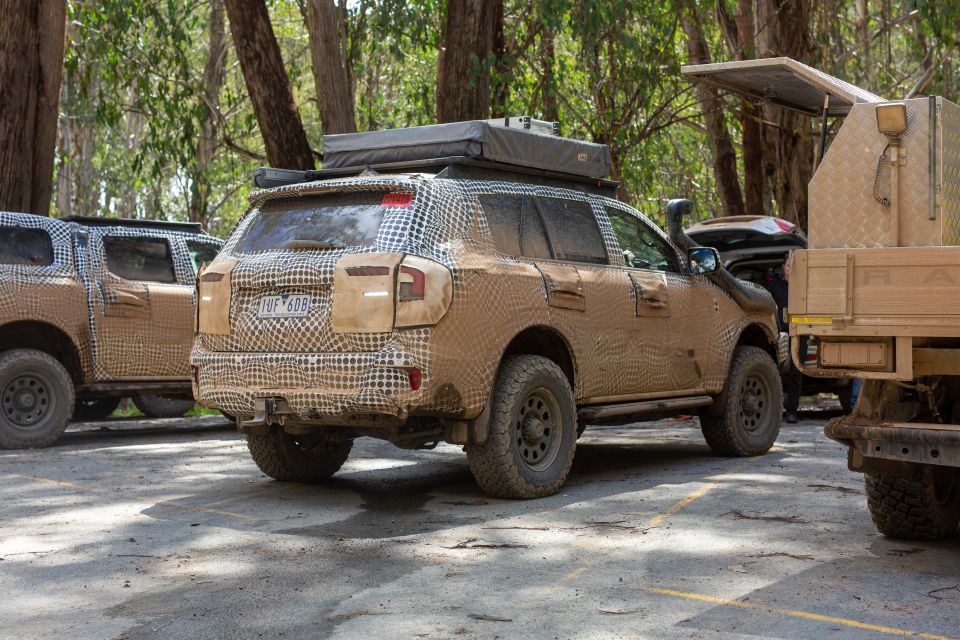
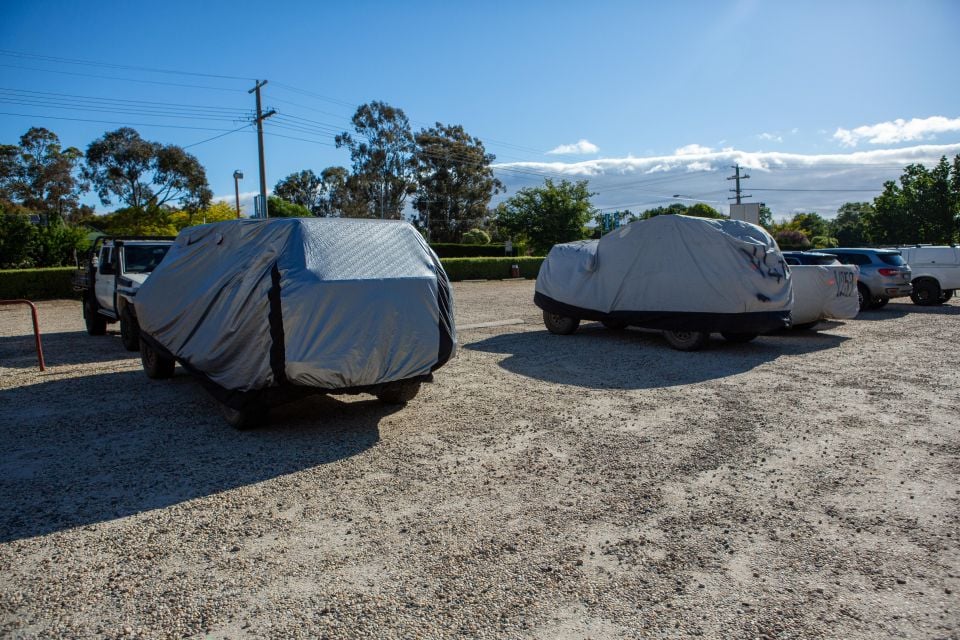
Our trip kicked off with a dinner the night before we hit the road early in the morning. Parked outside the hotel were a number of current model Everest and Ranger support vehicles, along with three cars with large tarps over them. Each vehicle had a code spray-painted on it to help identify the vehicle within the team.
Beneath the tarps are pre-production prototypes of the final cars Ford will sell. Given the launch at that point was still more than six months away, each vehicle was fully camouflaged, in addition to covers for headlights, a brush material draped over the rear suspension housing and faux padding on wheel arches to conceal contour lines.
Ford does most of its testing at private proving grounds, but ultimately testing needs to hit public roads to validate everything learned at the proving ground. It’s during these times that the brand’s secrets are most at risk of being exposed by the general public.
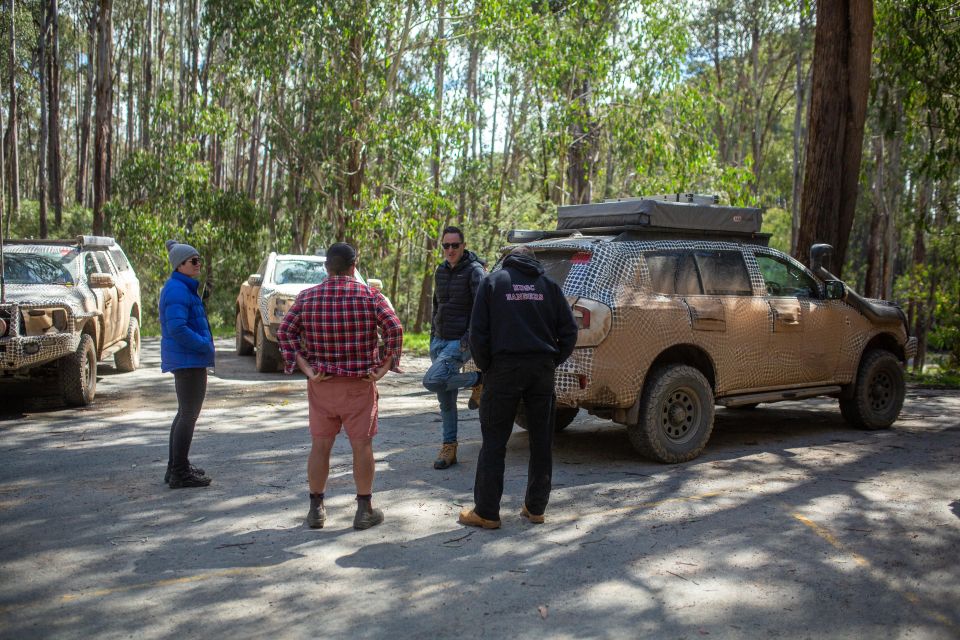
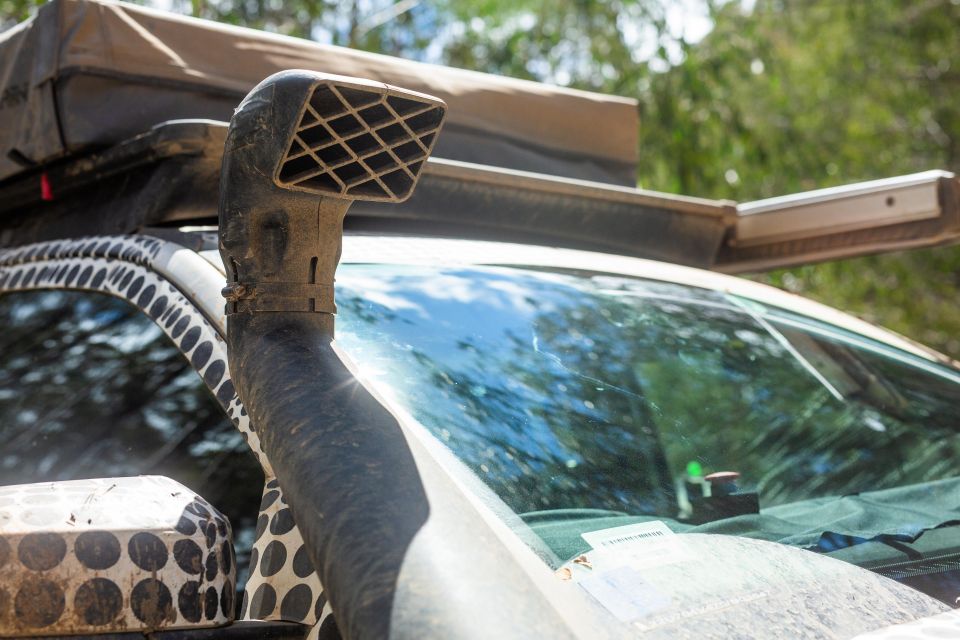
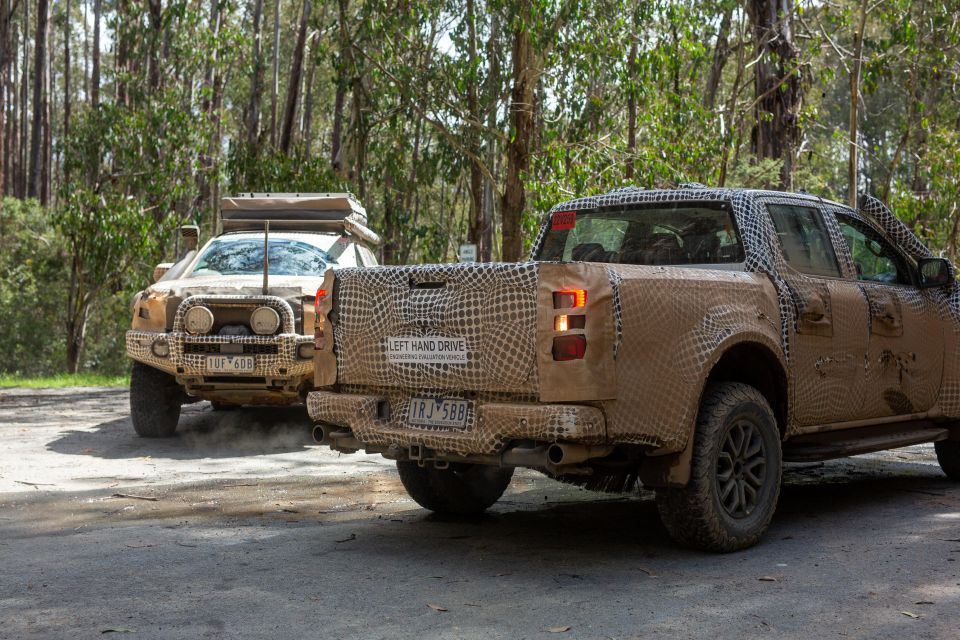
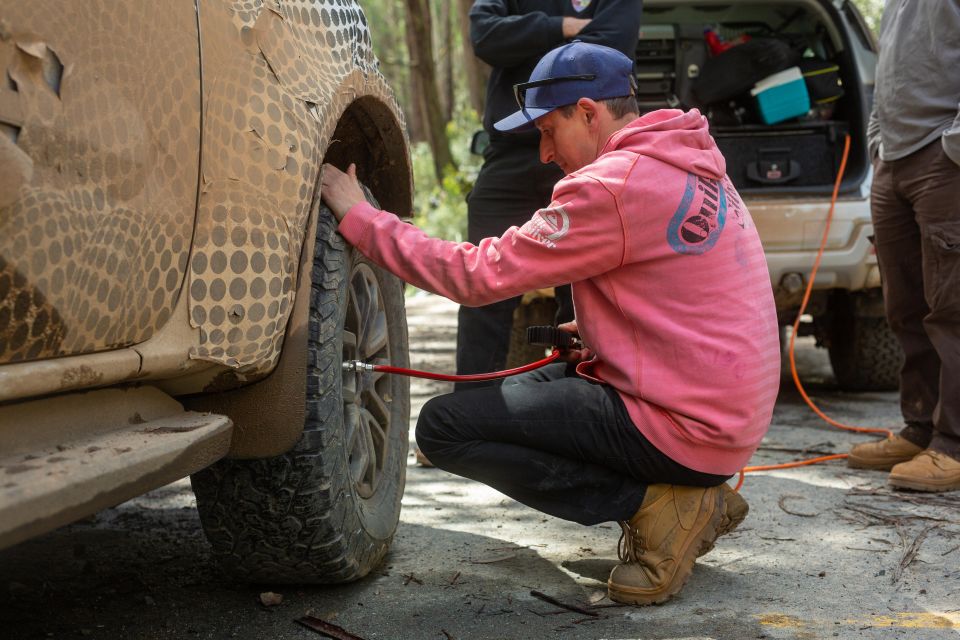
En route to the track entrance, the fleet of vehicles received a lot of attention on the road. Each driver is obligated to make sure their vehicle’s interior is always covered and during communication there are codenames for each vehicle. This is to ensure the brand remains concealed along with the model and variant of the test vehicles.
As the road ended and the snow cover increased we pulled up at the base of the four-wheel drive tracks to drop air pressures on all vehicles. Lower air pressures provided optimum traction in sketchy terrain (and boy did it get sketchy!) and help the off-road tyres dig into the terrain to avoid getting stuck.
Aside from one of the vehicles, each car was fitted with 33-inch all terrain tyres for this trip. While these don’t come standard on the Ranger and Everest, they can be fitted as aftermarket tyres if you’re serious about off-road driving.
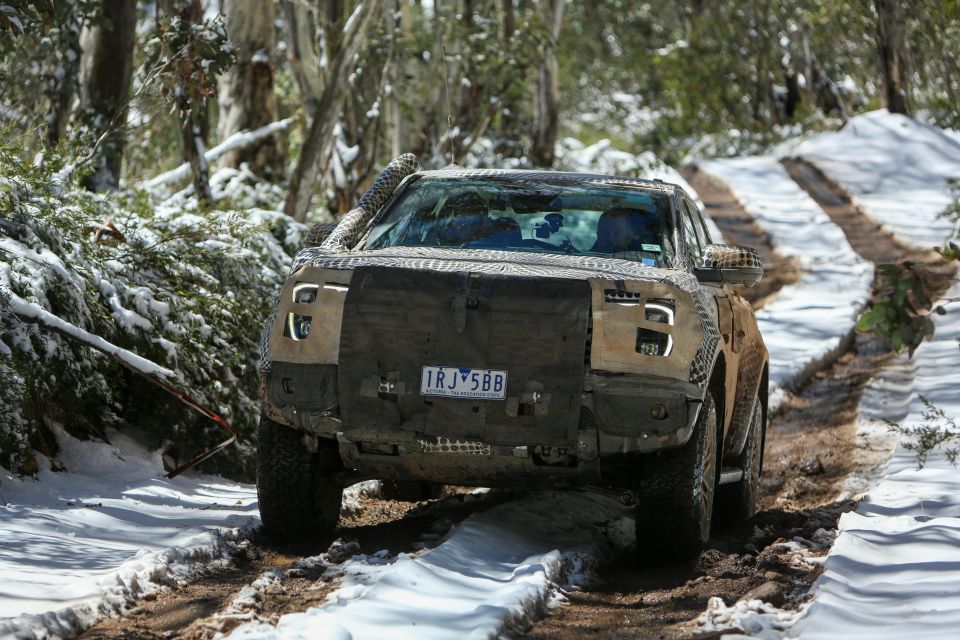
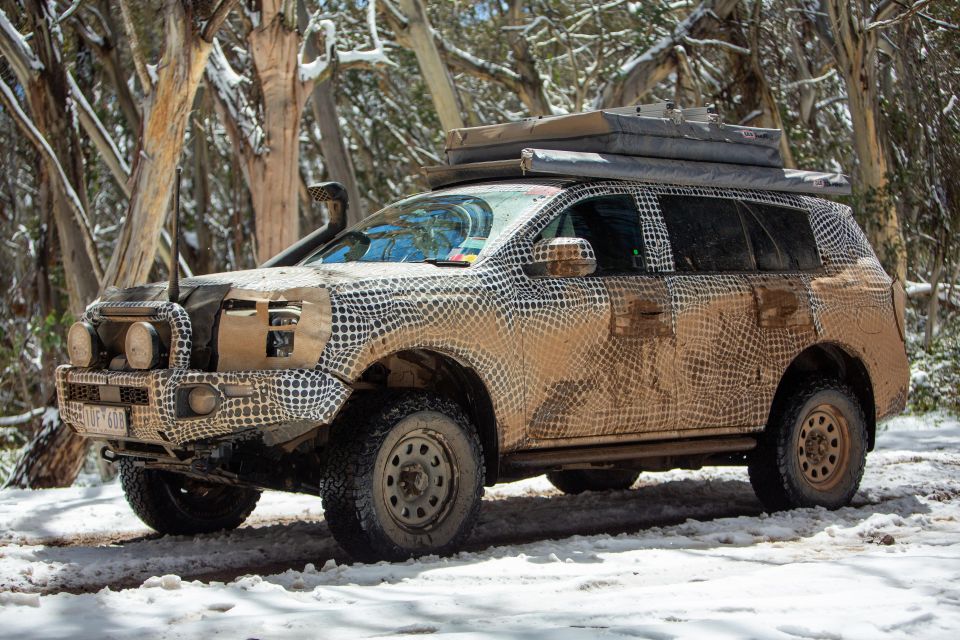
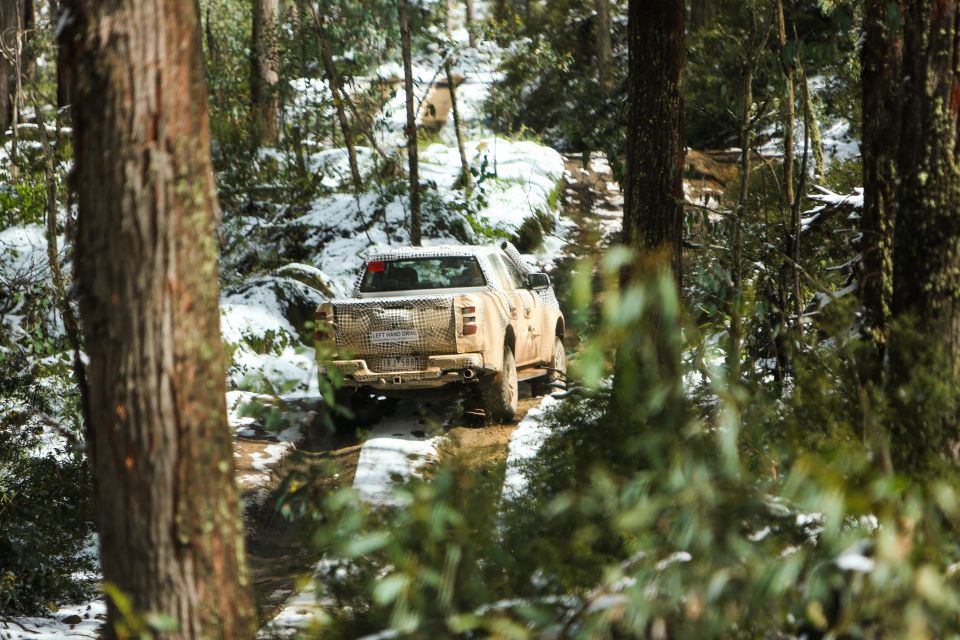
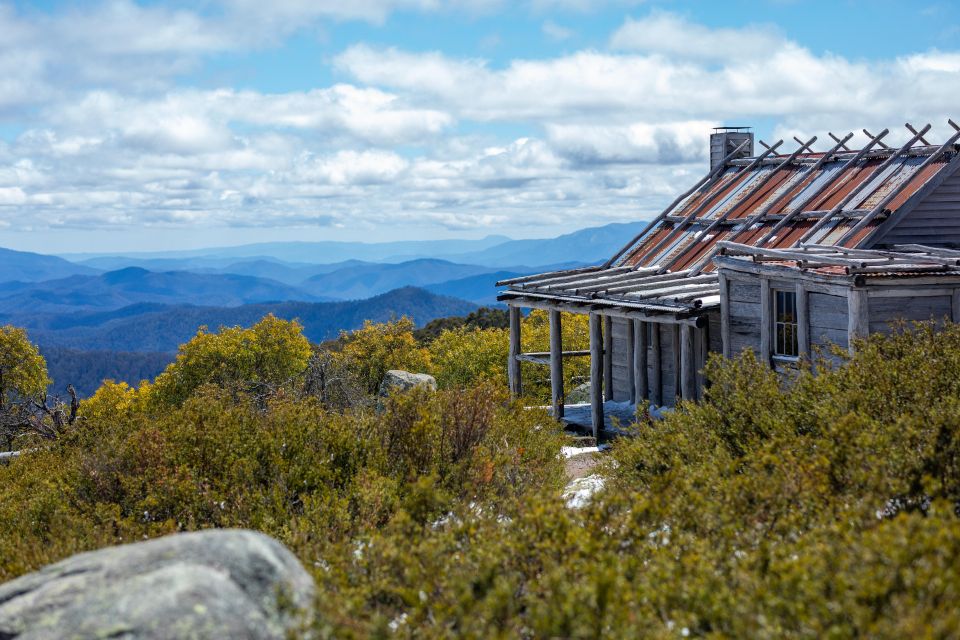
The engineers weren’t expecting snow this late in the year – their intention was for dry weather testing – but used the opportunity to do further calibration on traction control systems and integration of the ARB equipment.
During one of the longer climbs the Raptor chimed an engine temperature warning. The data logger was triggered and we pulled over to inspect. A quick inspection found a fan belt had slipped, which caused the car to hit its engine temperature warning point.
According to Ford, it was a one-off issue that they tried to replicate.
“The belt showed signs of debris hit. It showed signs of damage that was likely caused by something coming up and hitting the belt.”
“None of the other vehicles had it occur and we took the car back out to the High Country earlier this year, repeating the same route to see if we had an issue with debris causing belt failure. We have not seen the issue since. It is one of those things that can occur off-road, but the team did repeat test and did due diligence to ensure the checks were done.”
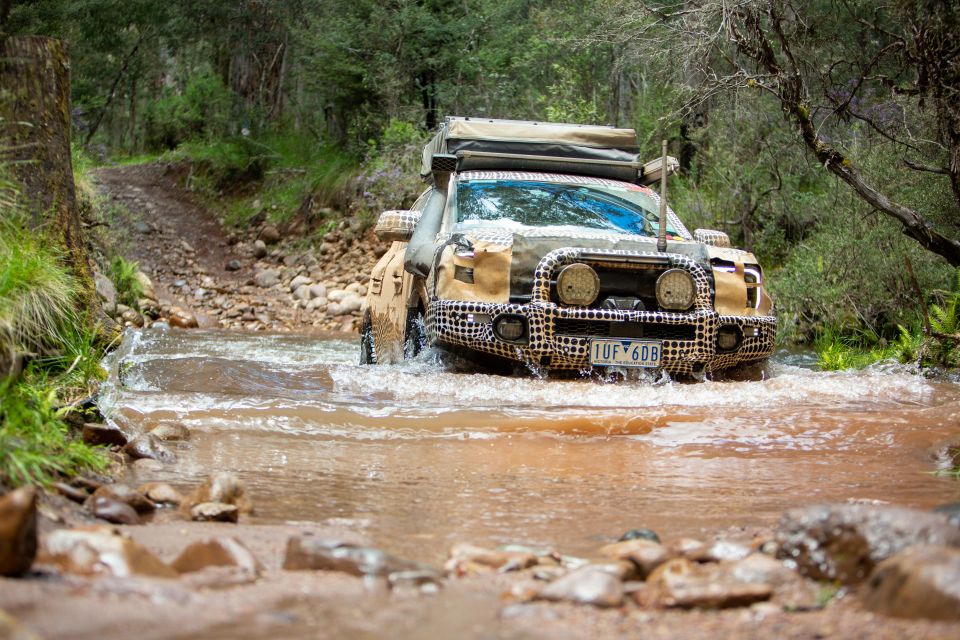
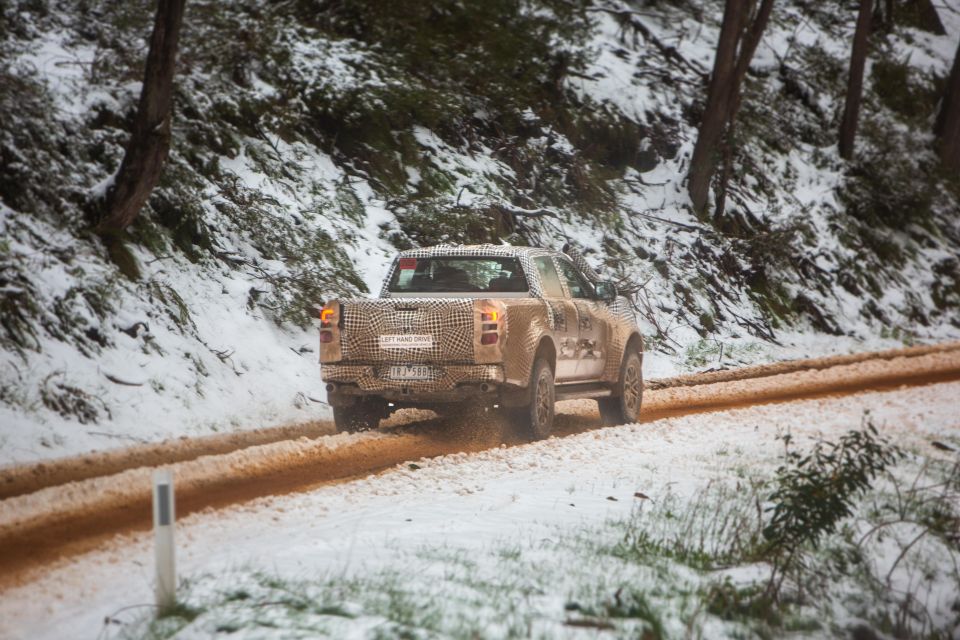
“The car’s engine management system operated perfectly, with the overheat warning coming up early and the engine starting to derate, protecting the engine and systems from failure. That’s part and parcel of these types of trips – to find issues, and rectify them before vehicles come to customers.”
I spoke with Ford Performance program manager, Justin Capicchiano. Justin said that this particular car had just clocked over 150,000km. It was just six months old.
“We’ve got people working around the clock at the proving ground – we’ve got day shift and an afternoon shift working. It’s not uncommon for the guys in the morning to be driving the car to do running kilometres, then hand the car over to the afternoon guys who continue putting on kays. It’s all day.
“It’ll be on engine dynos [dynamometers] and chassis dyno, it’ll be doing emissions work. This [vehicle] has done some durability work, because I can see some of their markings on the on the thing. So it literally does that stuff day in and day out.”
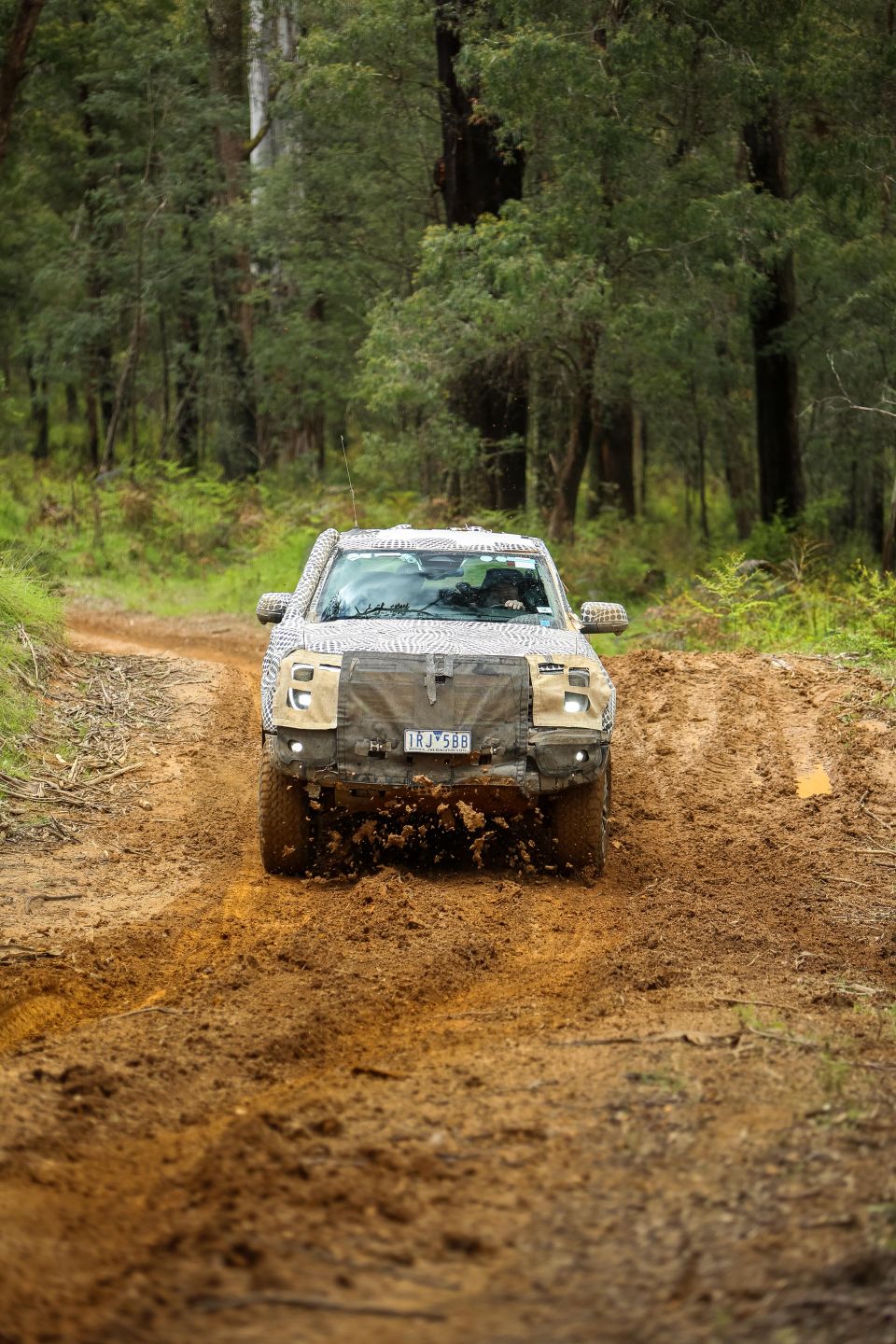
This particular Ranger Raptor was one of 50 cars being used by Ford as part of the Raptor development program. It was in the process of being loaded on to a plane to be sent to Dubai for hot weather sand driving – this gives you an idea of how hard a life these development vehicles cop before they are signed off for general sale.
Once the belt was replaced by the mechanics following the crew with a litany of spare parts, the going started to get pretty tough. The terrain had turned to clay that filled the tyre ruts effectively creating a racing slick on mud.
On one particular off-camber corner a member of the public managed to wedge their Toyota LandCruiser Prado between an embankment and a mud wall after sliding sideways down to a stop. It was then up to the Ford engineering team to set up Maxtrax to help the punter out of their bind.
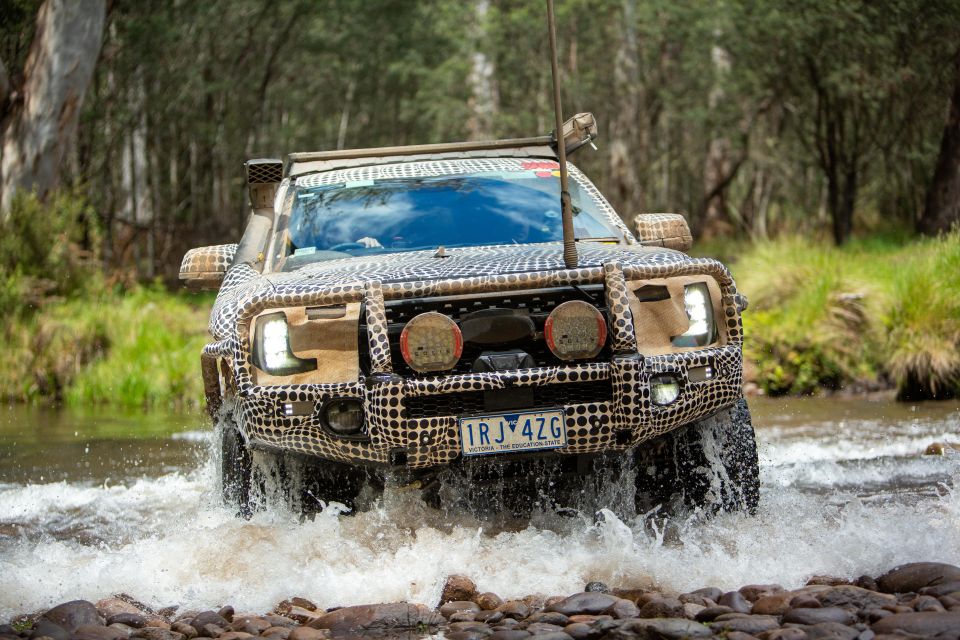
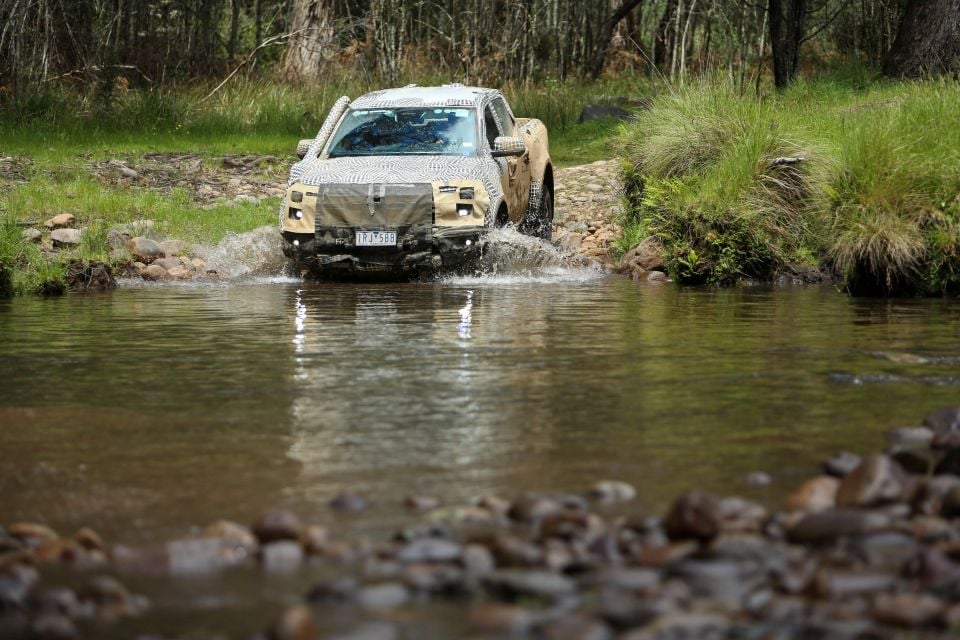
When our turn came around we managed to make it through by riding the high side of the embankment, but not before dropping a wheel off and facing sideways to the wall while crab crawling around the bend – it was some hairy stuff!
But without doubt the hardest part was a rutted and 300m steep climb. This type of climb is hard because it needs to be attacked with pace and if you let off at any point during the climb you run the risk of the vehicle sliding backwards with no traction or control.
We were in the Raptor and there was silence in the car as we ticked every four-wheel drive option available – the front differential lock, the rear differential lock, plus low range. Justin then buried the throttle and we held on as the Raptor shot out of the gates and climbed at warp speed.
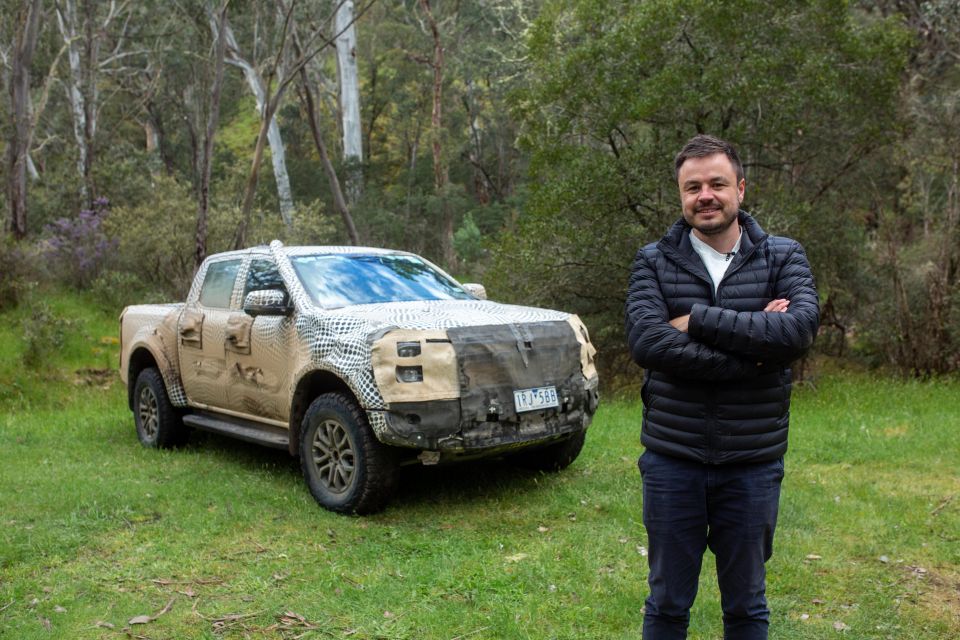
But half way up the hill it started to slow down, as the tyres filled with clay and we started running out of traction.
More throttle was commanded and the Raptor turned it up a notch, the centrifugal force pulled some of the clay out of the all-terrain tread and allowed us to dig in for added traction.
We somehow made it to the top after all the vehicles before us chopped up the track. The Ford team said earlier that day a number of meaty four-wheel drives failed the climb and had to winch out – so it gives you an idea how quickly things can change with the weather.
By this point I was well and truly blown away with what we had achieved in a set of virtually stock cars. You can imagine how much you’d be able to achieve by going to town on accessories and four-wheel drive equipment.
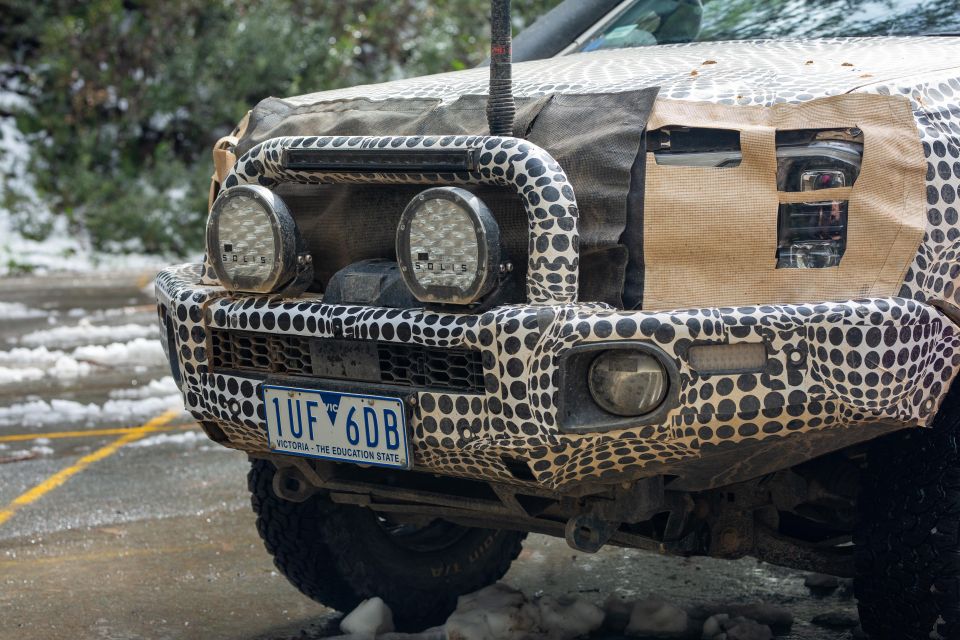
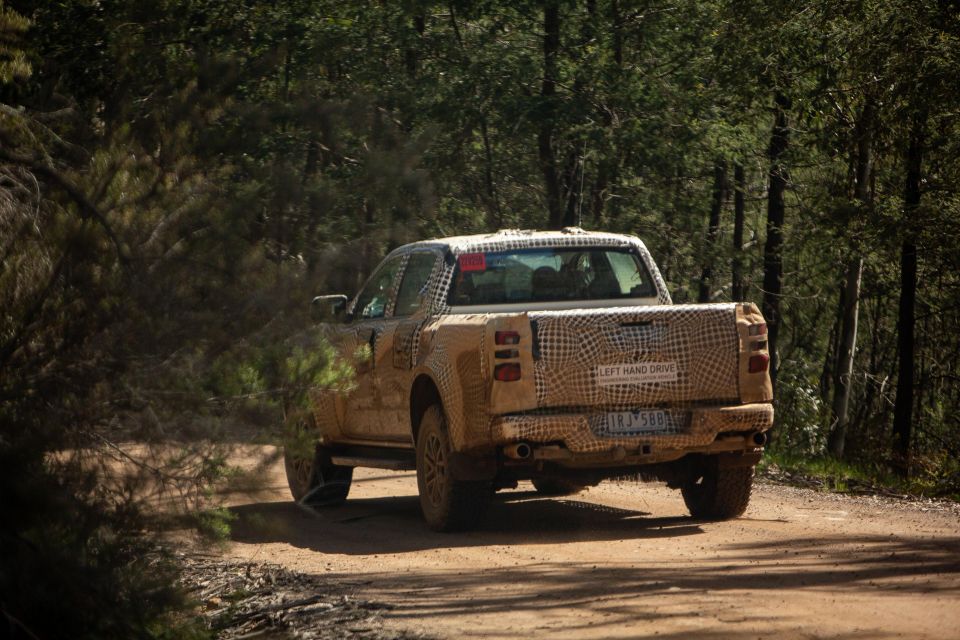
This development drive for me highlighted just how much effort Ford has gone to when it comes to developing these products.
They not only have to work for Australia, but in the 100+ markets these vehicles are sold globally. Some of these markets have different emissions or safety requirements so it’s not just a case of making a car that works for Australia.
I’m keen to have a proper drive of these vehicles once they go on sale locally later this year.

Click the images for the full gallery
MORE: Everything Ford Everest MORE: Everything Ford Ranger
Where expert car reviews meet expert car buying – CarExpert gives you trusted advice, personalised service and real savings on your next new car.
Discover and compare similar models
Paul Maric is a CarExpert co-founder and YouTube host, combining engineering expertise with two decades in automotive journalism.


William Stopford
11 Minutes Ago
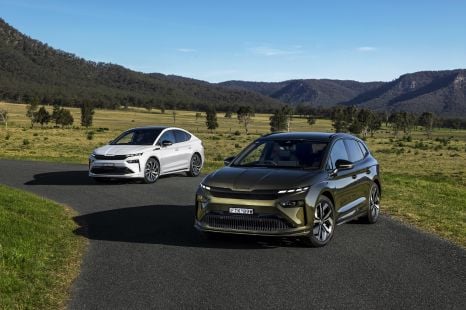

Max Davies
7 Hours Ago


Max Davies
7 Hours Ago


Ben Zachariah
9 Hours Ago


William Stopford
9 Hours Ago


James Wong
12 Hours Ago